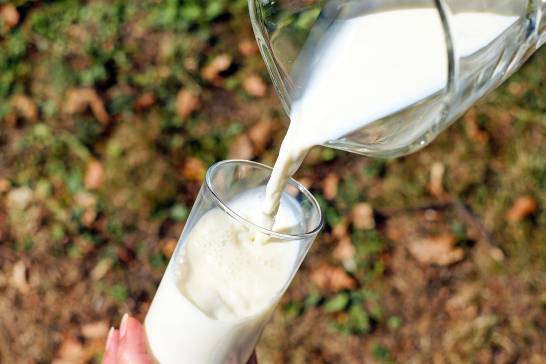Our European ancestors would have started consuming milk from domestic animals thousands of years before they developed the gene to be able to digest it, according to a study. studying published in the magazine Nature. The research analyzes the prehistoric patterns of its use over the last 9,000 years and offers new insights into its consumption and how lactose tolerance has evolved.
Until now, this resistance was thought to arise because it allowed people to consume more milk and dairy products without adverse effects, but the new work claims that the hunger and exposure to infectious diseases best justify this evolutionary change.
“Probably, the complications that people can suffer from drinking large amounts of milk would not differ much between our ancestors or us, as our genetics are not that different. However, diet and gut microbiota can make a difference, as they influence the severity of symptoms of lactose intolerance. tag thomasprofessor of evolutionary genetics and co-author of the study.
An unusual mutation that is now common
Today, two-thirds of the world’s adults can have mild problems if they drink too much milk, but these complications were much more common in our ancestors, according to the authors. The cause of these problems is lactosea sugar that, if not digested properly, can cause cramping, diarrhea and flatulence.
George Davey Smith, a researcher at the University of Bristol and co-author of the study, comments that “to digest lactose we need to produce the enzyme lactase in our intestine. This is done by almost all babies, but enzyme production rapidly declines between weaning and adolescence.”
However, about a third of adults continue to produce lactase thanks to a mutation in their DNA, which allows them to digest lactose without complications.
Scientific evidence suggests that this genetic alteration, known as lactase persistencebecame common among people 4,000 years ago, thanks to a remarkable process of natural selection.
The keys: hunger and disease
Despite mutation has been gaining ground among Europeans for thousands of years, more details of this change still need to be known to determine what really made us able to consume milk. This task is difficult because the use of this product has waxed and waned in different regions throughout history.
However, the authors are convinced that there are two reasons behind this shift: hunger and the circulation of pathogens. “When crops were lost or damaged, peasants increased their consumption of dairy products. Since they didn’t have persistent lactase, they could experience some minor complications more often,” says Thomas.
He adds: “The really serious problem arises when these people were severely malnourished and suffered from diarrheal diseases, which can deprive the body of the water and salts it needs for survival.”
Thomas’ theory of hunger is complemented by Smith’s, which considers that malnutrition and diarrhea can be aggravated in environments that favor the appearance of zoonotic diseasessuch as Neolithic settlements.
With increasingly dense and urbanized populations, the movement of these people and their frequent contact with animals was the perfect breeding ground for contracting these pathologies. Consequently, the natural selection provided genetic protection to our ancestors so they were less vulnerable to viruses, bacteria, parasites and fungi.
Maps and genetics to know milk consumption
The study’s conclusions are based on a map of prehistoric milk consumption, which analyzes 6,899 animal fat residues from 554 archaeological sites during the last few years. 9,000 years. The methodology combines ancient DNA, radiocarbon and archaeological data with new computational modeling techniques.
The researchers also examined the frequency of the main variant of lactase persistence gene among 1,786 prehistoric Eurasian individuals.
Together, these findings indicate that in Europe milk use was widespread, while in Asia peoples were still largely lactose intolerant, questioning whether milk consumption is a key factor in lactase persistence, as some hypotheses hold.
